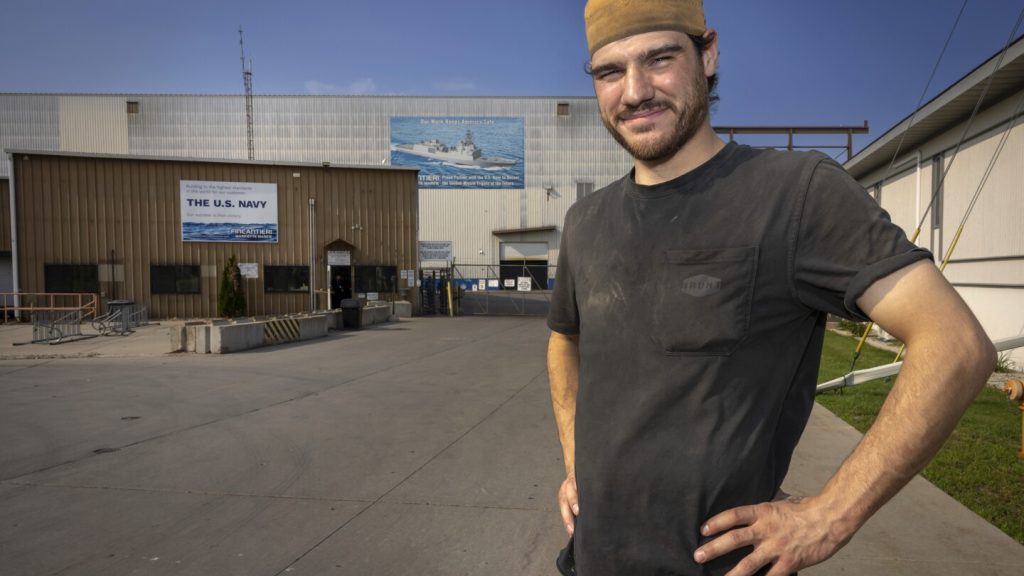The Navy is facing challenges in building lower-cost warships that can defend against missile attacks from Houthi rebels in the Red Sea, with a key factor being a shortage of skilled laborers. Lucas Andreini, a welder at Fincantieri Marinette Marine in Wisconsin, is among the young workers who have received training to work on building new ships. The industry is struggling to hire and retain workers as experienced veterans retire, leaving a gap in ship production and maintenance. This shortage, combined with shifting defense priorities, design changes, and cost overruns, has put the U.S. behind China in ship numbers, and the gap is widening, according to naval analysts.
Marinette Marine is under contract to build six guided-missile frigates, but they only have enough workers to produce one frigate per year. Shipyards across the country are offering training programs and partnering with technical colleges to provide workers with the necessary skills for building high-tech warships. Andreini, who trained at Northeast Wisconsin Technical College, emphasizes the benefits of working in shipbuilding, such as better health benefits, a pension plan, and the opportunity to acquire advanced skills. He feels a sense of fulfillment in serving his country and ensuring the safety of sailors.
Navy Secretary Carlos Del Toro highlighted the importance of training programs during commencement ceremonies, emphasizing the need for skilled workers to contribute to national defense. Retaining trained workers in a tight labor market is a concern, prompting initiatives such as retention bonuses at shipyards, including Marinette Marine. Shipbuilding companies like Huntington Ingalls Industries are creating partnerships with educational institutions to attract and retain workers. The Navy is working with industry partners to address common challenges and find solutions to the workforce shortage affecting ship construction.
One of the contributing factors to the current state of U.S. shipbuilding is the Navy’s frequent changes to requirements, upgrades, and designs after construction has begun. This has resulted in cost overruns, delays, and technological challenges in projects like the USS Ford aircraft carrier and the stealth destroyer program. The Navy is learning from past mistakes with the new frigates being built at Marinette Marine, aiming to streamline the production process and reduce costs. However, redesigns and construction delays have hindered progress, with the first Constellation warship three years behind schedule.
The changing nature of global threats, including increased competition from China and Russia, piracy, and rebel attacks, further complicates the challenges faced by the Navy in shipbuilding. The consolidation of shipyards and funding uncertainties have disrupted the cadence of ship construction and long-term planning. The Shipbuilders Council of America emphasizes the importance of consistent shipbuilding plans to maintain a skilled workforce. The Navy acknowledges the seriousness of the shipbuilding problems and continues to work with industry partners to find solutions and address common challenges.


